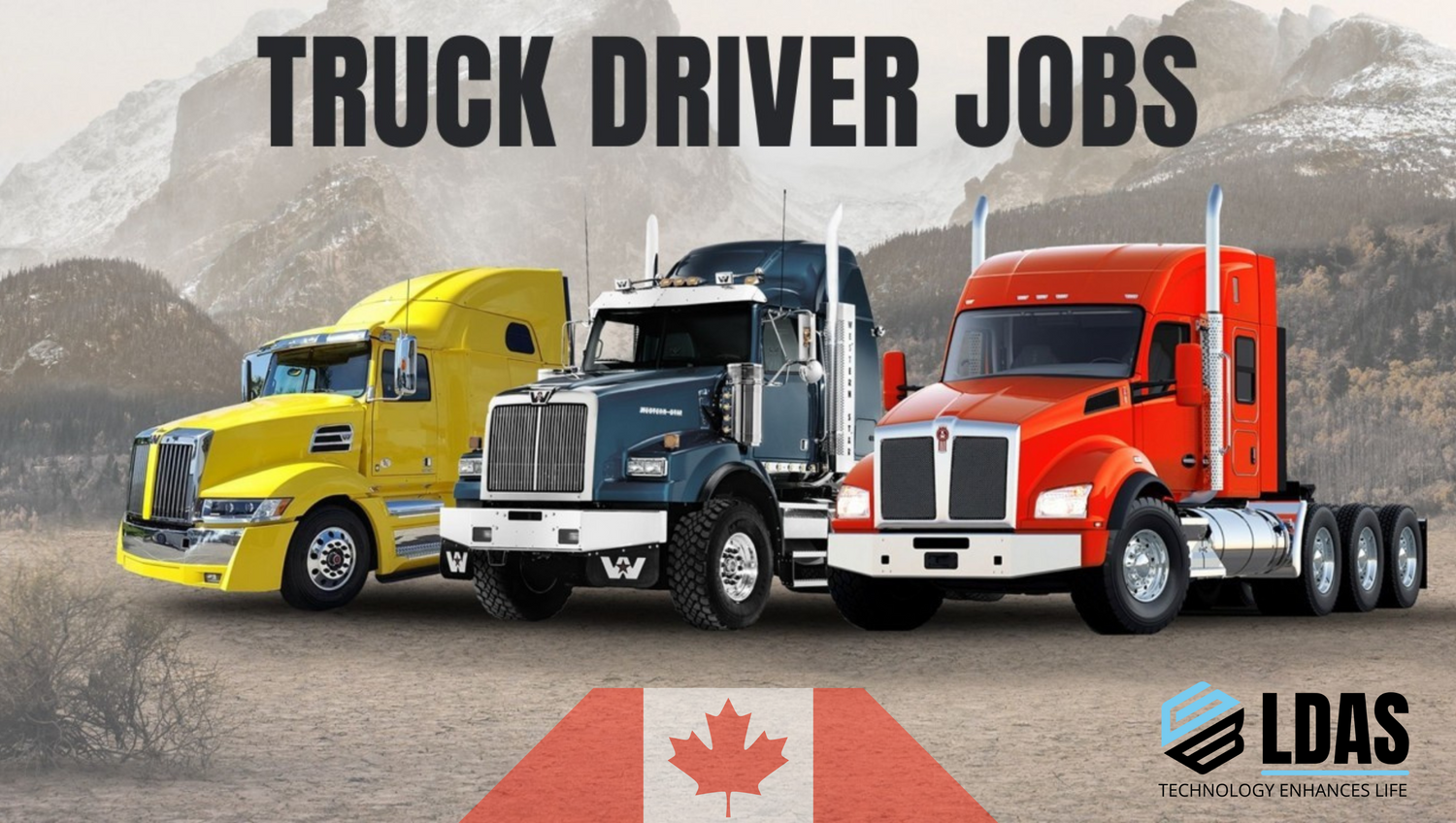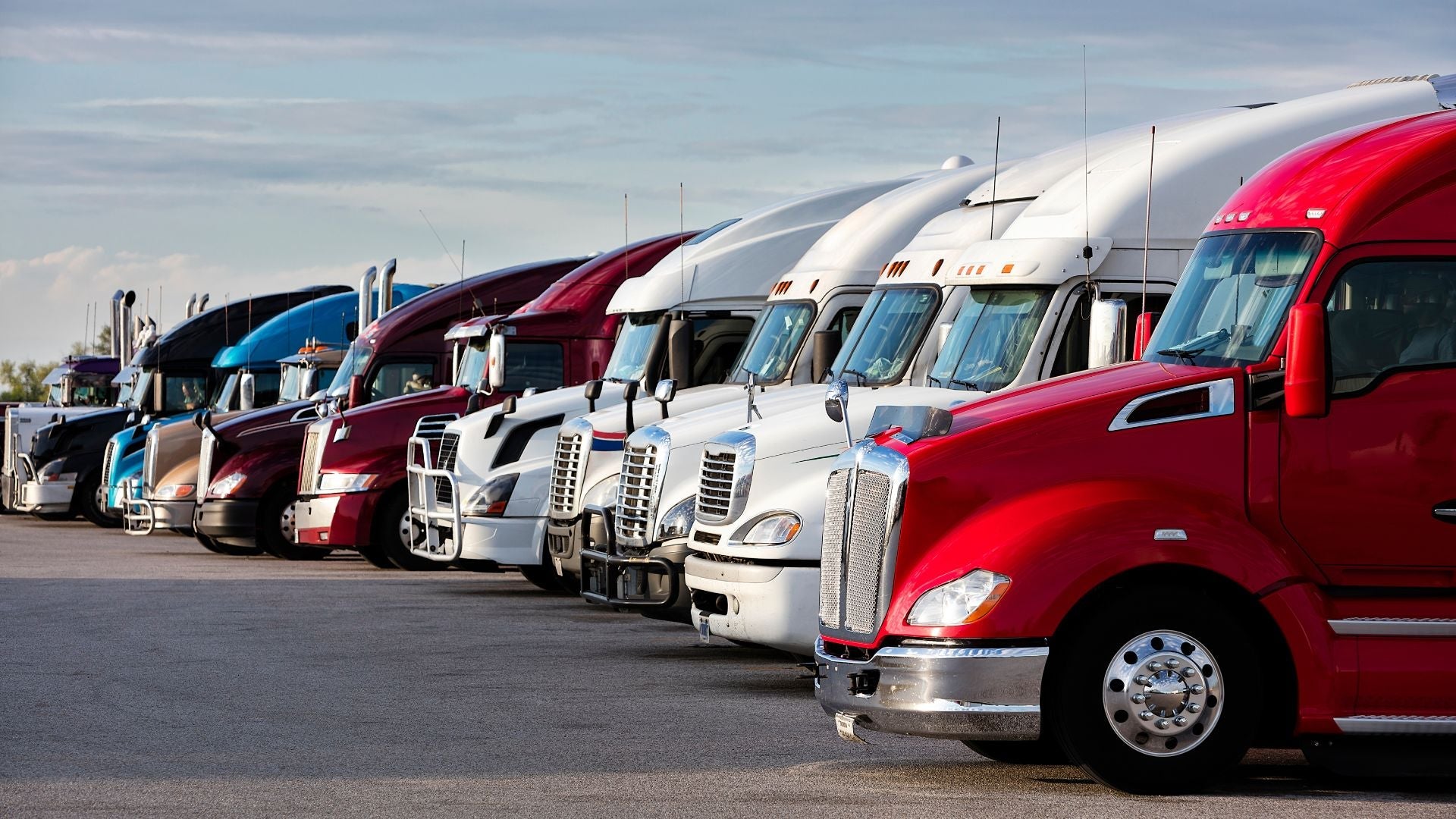Starting a trucking career in Canada can open doors to steady work in a booming industry. Trucking keeps the country’s economy moving, hauling goods across those endless highways.
Skilled drivers are in high demand, so it helps to know what you’ll need to get started. If you’re thinking about this path, understanding the qualifications and steps is key.
First off, you’ll need the right driver’s license. Most provinces want you to have a Class 1 or AZ license for long-haul work, and that means going through training and passing some exams.
Truck driving school isn’t just a box to check. It’s where you pick up the skills and know-how to handle these massive vehicles safely. That foundation really helps when you’re job hunting.
Getting into the trucking industry changes your lifestyle, too. Drivers spend long hours on the road and often work odd schedules.
It’s important to know what you’re signing up for. You’ll need to follow regulations and keep your certifications up to date if you want a long, successful run in this field.
Key Takeaways
- Trucking offers steady opportunities in Canada’s vital freight sector.
- Licensing, training, and up-to-date certifications matter.
- The job comes with a demanding schedule and a unique lifestyle.
Understanding the Trucking Industry in Canada
Canada’s trucking industry keeps the economy humming, moving freight across huge distances. There’s a surprising range of career options, and the field keeps growing as technology and demand shift.
Overview of the Canadian Trucking Sector
Trucking forms the backbone of Canada’s transportation network. Over 70% of domestic freight moves by truck.
Drivers haul goods within Canada and across the U.S. border, supporting trade and supply chains. The rules are strict—commercial vehicles need to meet safety, emissions, and licensing standards.
Sure, the industry faces some headaches: driver shortages and rising fuel prices come to mind. But the work is essential, and the pay can be pretty competitive.
Types of Trucking Jobs Available
Trucking jobs in Canada come in all shapes and sizes, depending on what’s being hauled and what certifications you’ve got. Here are some of the main roles:
- Long-Haul Drivers: These folks drive heavy-duty trucks for days, sometimes crossing provincial or even international borders.
- Local/Regional Drivers: They stick to a set area, usually getting home daily or at least weekly.
- Specialized Freight Drivers: These drivers move hazardous materials, oversized loads, or perishable goods. They need extra training and permits.
- Owner-Operators: Independent drivers who own their trucks and work with different clients or companies.
Every role asks for something a little different, so there’s room to find what fits you best.
Key Trends and Opportunities
The industry’s changing fast, adapting to new tech and environmental pressures. Here’s what’s shaping things now:
- Digital Technologies: Fleet management tools and automation are making things safer and more efficient.
- Sustainability Efforts: Companies are buying more fuel-efficient or electric trucks, aiming for a smaller carbon footprint.
- High Demand for Drivers: With lots of retirements and not enough newcomers, certified drivers—especially in places like Ontario and Alberta—are in demand.
- Government Initiatives: Training subsidies and other programs are out there to help people get started and raise safety standards.
Requirements to Become a Truck Driver
If you want to drive trucks in Canada, you’ll need to meet some clear requirements. These cover legal eligibility, education, and physical fitness—no shortcuts here.
Legal Eligibility and Age Limits
You need a valid driver’s license—usually at least a Class 5, but commercial trucking often means Class 3 or Class 1. Age matters, too. In most provinces, you have to be 18 to 21 years old to start the licensing and training process.
A clean driving record is a must. Serious offenses can block your application.
[List example of licenses by type:]
- Class 5: Basic license for everyday driving.
- Class 3 or 1: Needed for commercial trucks.
You can get more details at truck driver's licence - Ontario.ca.
Education and Language Proficiency
Most employers want you to have finished secondary school. Some entry-level training programs take up to three months, and they’re often required.
You’ll need to speak English or French well enough to read road signs, fill out paperwork, and talk with clients or dispatchers. Both languages are official in Canada, so either works.
Check out Transport Driver Job Bank for more info.
Medical and Physical Requirements
There’s a vision test and a medical exam to make sure you’re fit for long-haul driving. Safety’s a big deal, and these checks help keep everyone protected.
You’ll also need to be physically up for the job. That can mean lifting, staying alert for long hours, and handling equipment. Some training programs even test your fitness before you start.
For details on medical standards, see Become a Truck Driver Guide.
Getting a Commercial Driver’s License (CDL) in Canada
You can’t drive big rigs or buses in Canada without a commercial driver’s license (CDL). Getting one means picking the right license, applying through your province, and proving you’ve got the skills and knowledge.
Types of Commercial Licenses
There are several types of CDLs in Canada, depending on the vehicle you’ll drive. Here are the main ones:
- Class 1: For semi-trailer trucks.
- Class 2: For buses with more than 24 passengers.
- Class 3: For bigger vehicles like dump trucks or trucks towing heavy trailers.
- Class 4: For taxis, ambulances, or small buses.
Each license comes with its own set of rules, and provinces regulate them. You’ll find the nitty-gritty on sites like Ontario’s truck driver license page.
CDL Application Process
Applying for a CDL starts with meeting the age and medical requirements set by your province. Here’s how it usually goes:
- Meeting Eligibility: You need a valid non-commercial license and to be at least 18, usually.
- Attending Training: Most provinces want you to finish an accredited truck driving course. This Truckker training guide covers what’s involved.
- Submitting Documents: Bring your ID, medical clearance, and pay the required fees.
Rules can change by province, so double-check before you start.
CDL Exams and Testing
To get your CDL, you’ll need to pass both a written test and a road test.
- Knowledge Tests: These cover traffic laws, vehicle safety, and how to operate commercial vehicles. Local licensing offices usually have study manuals.
- Road Tests: You’ll show your driving skills—parking, turning, and inspecting the truck.
In some places, like BC or Alberta, you have to finish an entry-level program before taking the test. Northwest Tank Lines has more info on that.
Once you pass, you’re set to start your trucking career legally and safely.
Essential Training and Certifications
To really get rolling in Canadian trucking, you’ll need some training and certifications. These aren’t just red tape—they help you build real skills and meet industry expectations.
Mandatory Entry-Level Training
Mandatory Entry-Level Training (MELT) is a must for a Class 1 or Class A commercial license, depending on where you live. MELT mixes classroom lessons with hands-on driving practice.
You’ll cover things like vehicle inspections, air brakes, and safe driving. The training usually takes a few weeks, making sure you’re ready for the road and up to government standards.
Additional Certifications for Specialized Hauling
If you’re interested in hauling tankers, oversized loads, or other specialized cargo, you’ll need extra certifications. These might cover air brakes, long-combination vehicles, or heavy equipment transport.
Employers often prefer drivers with these extra skills. Sometimes you’ll need more classes or exams, depending on the job’s demands.
Hazardous Materials Endorsements
If you're hauling hazardous materials, you'll need a Hazardous Materials (HAZMAT) Endorsement. To get it, you have to pass a written exam about safety protocols for handling, transporting, and identifying dangerous goods.
Canada’s Transportation of Dangerous Goods Act sets the rules for this certification. Applicants might also need to complete background checks and training courses before qualifying.
Finding Your First Trucking Job

Starting a trucking career in Canada means finding entry-level opportunities and getting some hands-on experience. Building industry connections really helps, too.
Job Search Strategies for New Drivers
New drivers should look for companies open to hiring people without much experience. Hunt for job ads mentioning "entry-level positions" or "training provided."
Sites like Indeed often list jobs aimed at beginners. Local or regional trucking companies can be a good bet since smaller outfits might be more willing to train newcomers.
Tips for Effective Job Searching:
- Check job boards often for the latest openings.
- Tailor your resume to highlight transferable skills and any certifications, like a Class G license.
- Try applying to in-demand sectors such as delivery services and logistics.
Building Work Experience
Most new drivers start with smaller delivery jobs or part-time gigs in logistics. It’s a way to get used to professional driving expectations and handling bigger vehicles.
Some companies run mentorship programs, pairing new drivers with experienced folks for long-haul or specialized routes. Trucking schools add to your resume, too—places like Sprint Driving School offer advanced certifications and connect you with employers.
Creative Ways to Build Experience:
- Volunteer in non-driving roles at logistics companies to learn the ropes.
- Take on temporary or seasonal trucking jobs for fast industry exposure.
Joining Trucking Associations
Trucking associations help new drivers meet industry pros and stay in the loop about trends and regulations. They often host networking events or job fairs where you might land a job on the spot.
Membership sometimes unlocks extra training or certification programs to boost your resume. Here are a couple of examples:
- Canadian Trucking Alliance: Shares industry news and job leads.
- Ontario Trucking Association: Focuses on provincial rules and connects you with local employers.
Associations can even help with job applications and interview prep, which can definitely improve your odds.
Understanding Working Conditions and Lifestyle

Trucking in Canada comes with its own set of working conditions that shape your daily life. Work-life balance, hours on the road, and the ups and downs of the job all play a part.
Work-Life Balance and Flexibility
Schedules can really vary depending on your job and employer. Local drivers might get to be home every night, but long-haul truckers could be gone for weeks.
Some companies offer flexible shifts or let you pick your routes, which is great if you need it. If family time is your priority, local driving jobs usually make that easier.
Typical Hours of Service
Canada enforces strict hours of service rules for driver safety. Commercial drivers can’t drive more than 13 hours in a day and need at least 8 hours of rest after each shift.
There are also weekly limits—usually 70 hours in seven days. Drivers have to keep detailed logs to prove they’re following the rules, though the exact regulations depend on where you’re driving.
| Aspect | Details |
|---|---|
| Maximum Driving Hours | 13 hours per day |
| Required Rest Period | 8 consecutive hours |
| Weekly Hour Limit | 70 hours in 7 days (typical) |
Benefits and Drawbacks
Trucking offers steady pay, job security, and a chance to see the country. Many drivers get health benefits and retirement plans, so it’s not a bad gig for stability.
But it’s not all smooth sailing. Long hours, time away from home, and the physical toll can be tough. Sitting for ages and weird sleep schedules can mess with your health, and life on the road takes some getting used to.
Owner-Operator and Starting Your Own Trucking Business

Some drivers want more independence and decide to become owner-operators. Running your own trucking business gives you freedom but comes with a ton of responsibility and planning.
Owner-Operator vs. Employee: Pros and Cons
Owner-Operator:
-
Pros:
- You control your routes, schedule, and loads.
- There's potential to earn more than employee drivers.
- You can build your own brand and business.
-
Cons:
- You cover all expenses—fuel, maintenance, insurance, you name it.
- Financial risk is higher, especially when work slows down.
- You have to handle invoicing, taxes, and paperwork for the CRA.
Employee Driver:
-
Pros:
- Steady pay without worrying about operating costs.
- Employers usually offer health insurance and retirement plans.
- No need to deal with business admin.
-
Cons:
- Less say in your schedule and equipment.
- Pay is capped, and there’s limited room for growth.
Steps to Starting a Trucking Business
-
Business Registration and Licensing:
Register your business with the right provincial or federal authorities. You'll need a Commercial Driver’s License (CDL) and possibly other permits. -
Secure Equipment:
Buy or lease a truck that fits your needs. New or used—it depends on your budget and what you want out of it. -
Understand Regulations:
Get familiar with Canadian trucking rules, including Hours of Service and compliance requirements from Transport Canada and the CRA. -
Insurance Coverage:
Pick up commercial trucking insurance—liability, cargo, and physical damage are must-haves. -
Budget and Financing:
Work out a budget for start-up costs, ongoing expenses, and slow periods. If you need to, look into loans or financing. -
Choose a Niche:
Pick your market—maybe local delivery, long-haul, or something specialized like refrigerated goods. -
Build Relationships:
Team up with freight brokers or use load boards to find steady work. Sites like Truckstop can help you land loads. -
Set Up Record-Keeping Systems:
Use bookkeeping software to track your income, expenses, and taxes. Staying organized is key for dealing with the CRA. -
Maintain and Grow:
Stay on top of truck maintenance to avoid expensive breakdowns. Build a solid reputation so clients come back.
Buying or Leasing a Truck in Canada

Getting a commercial vehicle is a big step in your trucking career. Deciding whether to buy or lease depends on your budget, long-term goals, and what kind of financing you can find.
Evaluating Your Options
When you’re deciding whether to buy or lease a truck, it’s all about figuring out what you actually need. Buying means you own your truck outright, so you can customize it and build equity over time.
But buying takes a big upfront investment or a loan, so it’s definitely a long-term thing. New trucks usually come with warranties, but if you’re dealing with an older rig, maintenance costs can creep up fast.
Leasing, on the flip side, offers flexibility and lower upfront costs. Most lease agreements bundle in maintenance, so you can dodge some of those surprise bills.
Still, leasing usually limits how much you can customize your truck, and you won’t own it at the end. Leasing works well if you want to try out newer models or aren’t sure what kind of truck fits best.
Here’s a quick comparison:
| Aspect | Buying | Leasing |
|---|---|---|
| Upfront Costs | High (purchase price or loan) | Lower (monthly payments) |
| Ownership | Yes | No |
| Flexibility (end of term) | Retain the truck | Return or renew lease |
| Maintenance Responsibility | Entirely on the owner | Often included in lease packages |
Financing and Leasing Considerations
Whether you buy or lease, financing is a huge part of the process. If you’re buying, banks and lenders check your credit score and financial history before approving a loan.
Some drivers look into lenders who specialize in trucking. Interest rates and loan terms can be all over the map, so it pays to shop around.
If leasing sounds better, companies like Equipment Finance Canada might offer flexible plans. These sometimes come with no down payment, steady monthly payments, and a chance to upgrade your truck every so often.
But don’t rush—always read the lease details so you know about mileage limits, penalties, and extra fees lurking in the fine print.
Staying Compliant and Advancing Your Career

Truck drivers in Canada need to keep their certifications up to date and follow industry rules to stay compliant. If you want to move up in your career, you’ll probably need extra training and to master safety procedures set by authorities like the CRA.
Ongoing Training and Safety Standards
Continuing education really matters for truckers who want to grow professionally and keep up with regulations. Many drivers take refresher courses to stay current on safety standards and industry best practices.
These programs might dig into advanced vehicle maneuvering, defensive driving, or cargo handling techniques. Safety standards focus on preventing incidents—think regular equipment checks and following hours-of-service rules.
Some truckers go for extra certifications, like hazardous materials or specialized freight. That can open doors for better jobs and keeps you in line with Canada’s legal and safety rules.
Regulatory Compliance and CRA Obligations
Canadian truck drivers have to keep up with tax filings and employment paperwork. The Canada Revenue Agency (CRA) expects owner-operators and independent drivers to keep detailed records of their earnings and expenses.
Accurate reporting helps you avoid penalties and stay on the right side of the law. Drivers also need valid certifications, like a Class 1 Driver’s Licence, and paperwork for permits or border crossings.
Staying compliant means following weight limits and behaving professionally during audits or inspections. It’s not glamorous, but it’s necessary.
Frequently Asked Questions

Starting a trucking career in Canada isn’t a one-size-fits-all process. Steps, costs, and requirements can look pretty different for residents, newcomers, and folks who want to go independent.
What are the steps to becoming a truck driver in Canada without any experience?
If you haven’t driven a truck before, you’ll need to get a valid driver’s license and meet the minimum age requirement—usually 18 or 21. Truck driving schools offer training for entry-level certification, and you’ll have to pass a road test for your professional license.
Some programs even help with job placements, which can be a real lifesaver when you’re starting out.
What is the process for foreigners to pursue a trucking career in Canada?
If you’re coming from abroad, you’ll need a valid work visa or permit and to meet Canadian immigration standards. You also need a driver’s license—either international or Canadian—that fits provincial rules.
Finishing recognized training programs is a must for certification. Just keep in mind, provinces can have their own quirks and requirements.
What are the initial costs associated with starting a trucking business in Canada?
Getting a trucking business rolling means paying for trucks (whether you buy or lease), insurance, licensing, fuel, and maintenance. Your start-up costs can swing a lot depending on your fleet size and business goals.
Don’t forget, extra training and certifications can tack on more fees too.
How long is the training period to become a certified truck driver in Canada?
Training usually lasts between 4 and 12 weeks, depending on the program and where you live. The timeline can change based on course schedules and when you can book your road test.
Some longer programs go deeper, covering advanced certifications for specific trucks.
What are the requirements to get trucking authority for an independent company in Canada?
To get trucking authority, you’ll need to apply for a National Safety Code (NSC) certificate, register your fleet, and get the right insurance. If you’re planning to haul goods across borders, import/export licenses might come into play.
Following all provincial and federal rules is a must if you want approval. There’s no shortcut around that part.
Are there opportunities for truck driving jobs in Canada with visa sponsorship?
Some trucking companies in Canada sponsor visas because they need to fill labor shortages. You'll find that employers often look for experienced drivers who are open to relocating.
Job postings that mention visa sponsorship usually include details about who's eligible and where the jobs are located. It's worth checking those listings if you're considering making the move.











